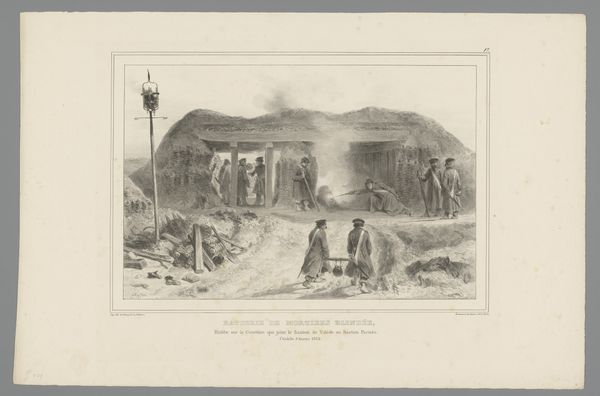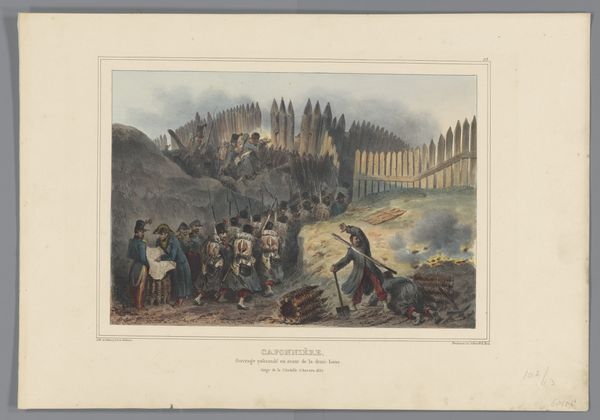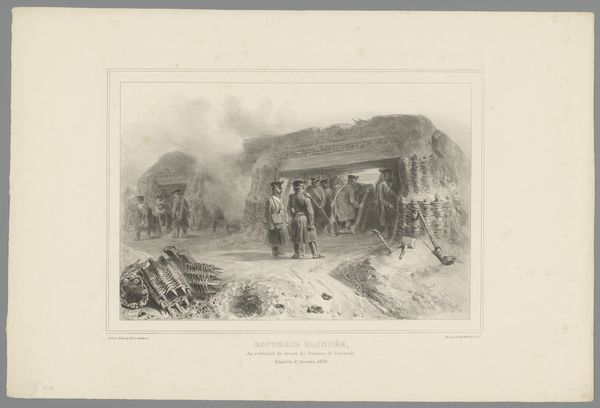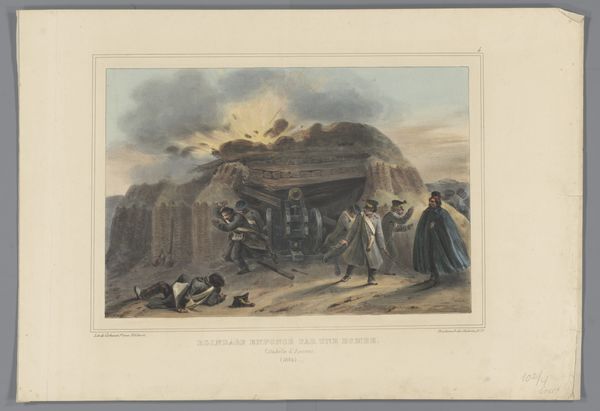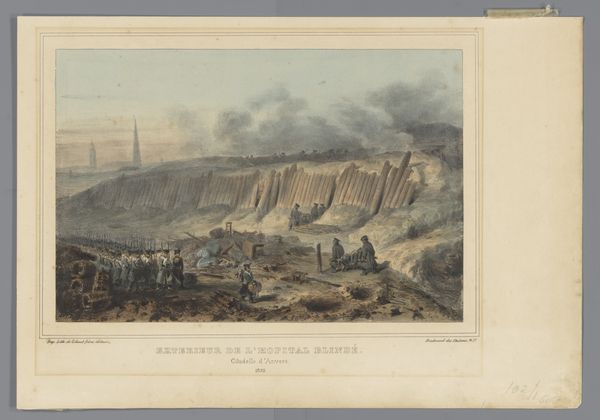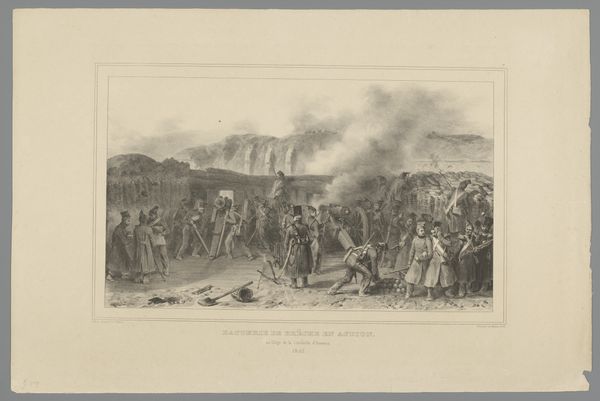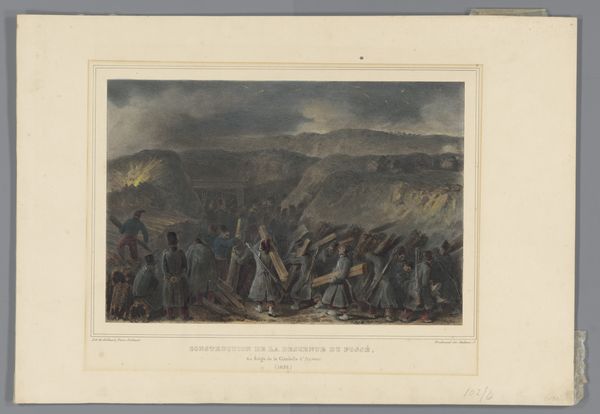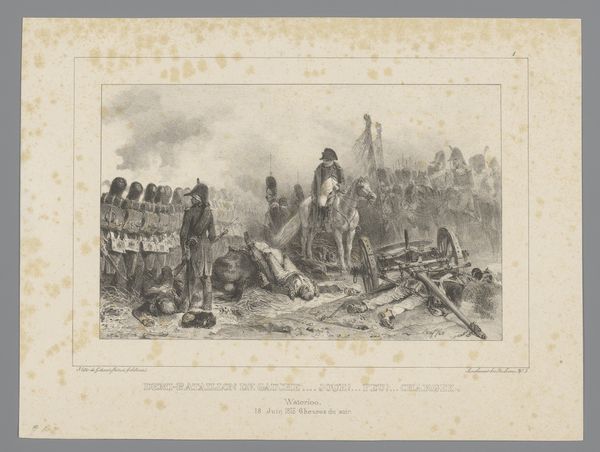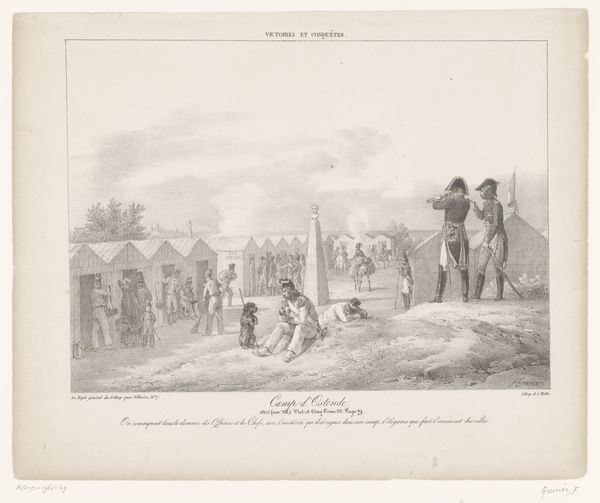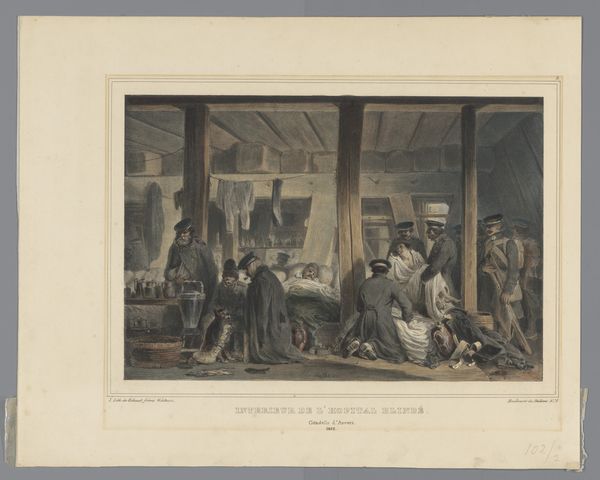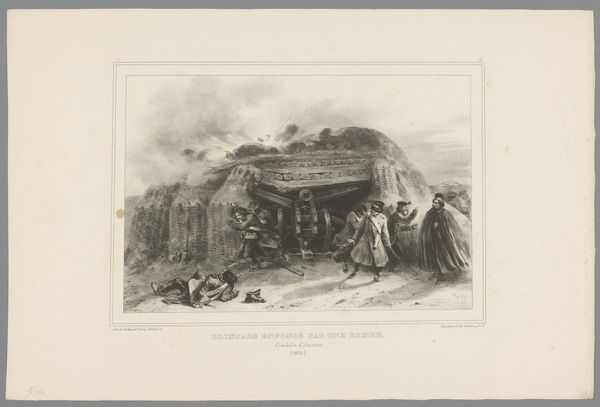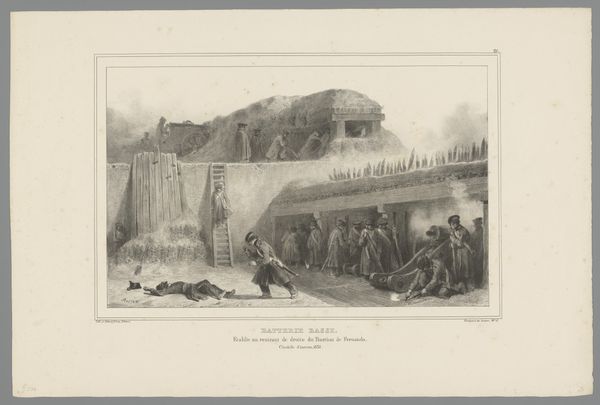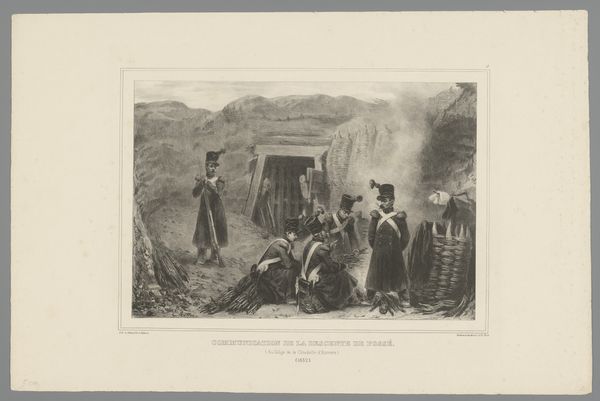
drawing, print, watercolor, pencil
#
drawing
#
narrative-art
# print
#
landscape
#
figuration
#
watercolor
#
coloured pencil
#
romanticism
#
pencil
#
history-painting
Dimensions: height 346 mm, width 500 mm
Copyright: Rijks Museum: Open Domain
Curator: Auguste Raffet's “Afschieten van een mortier, 1832,” or “Firing a Mortar, 1832,” now housed in the Rijksmuseum, is a captivating work executed with pencil, watercolor, and colored pencil. Editor: My initial impression is one of constrained intensity. The subdued palette of earthy tones—ochre, browns, greys—intensifies the moment right before a burst of violent action. The low horizon line presses down on the scene. Curator: Absolutely. The subdued colors underscore the weight of the event. Consider the central motif: men gathered around what appears to be a firing mortar. In the Romantic style, this moment carries significant historical connotations, embodying not just warfare, but also the cultural and political tumult of 19th-century Europe. The print immortalizes not only an action, but its wider effects across humanity. Editor: Precisely, note how the horizontal composition, segmented by the earthen structure, contains pockets of activity – preparation, execution, observation. Our gaze is drawn left to right, mimicking the firing sequence itself. The composition lends itself to narrative progression, as if the event is laid out for analysis. Curator: The earthwork itself serves as a crucial symbolic anchor, literally shielding these figures from danger but simultaneously trapping them within a shared, explosive destiny. I interpret this entrenchment as both a tactical maneuver, but also a visualization of societal fortifications--how individuals fortify their shared identities to confront a common threat. Editor: True. Moreover, the material itself—the coarse earth—highlights a crucial relationship between people and landscape. How this earth and raw environment facilitates or constrains. It is a stage set not for grand gestures but for human endeavor within an unwieldy and indifferent natural order. Curator: Raffet skillfully captures this delicate tension, weaving together landscape, symbol, and historical context. The drawing underscores our intrinsic relationship with memory and events that continue to resonate within our culture. Editor: Indeed. Raffet has masterfully created an analysis of cause and effect within the frame, utilizing color and form to guide our observation and interpret his own message.
Comments
No comments
Be the first to comment and join the conversation on the ultimate creative platform.
